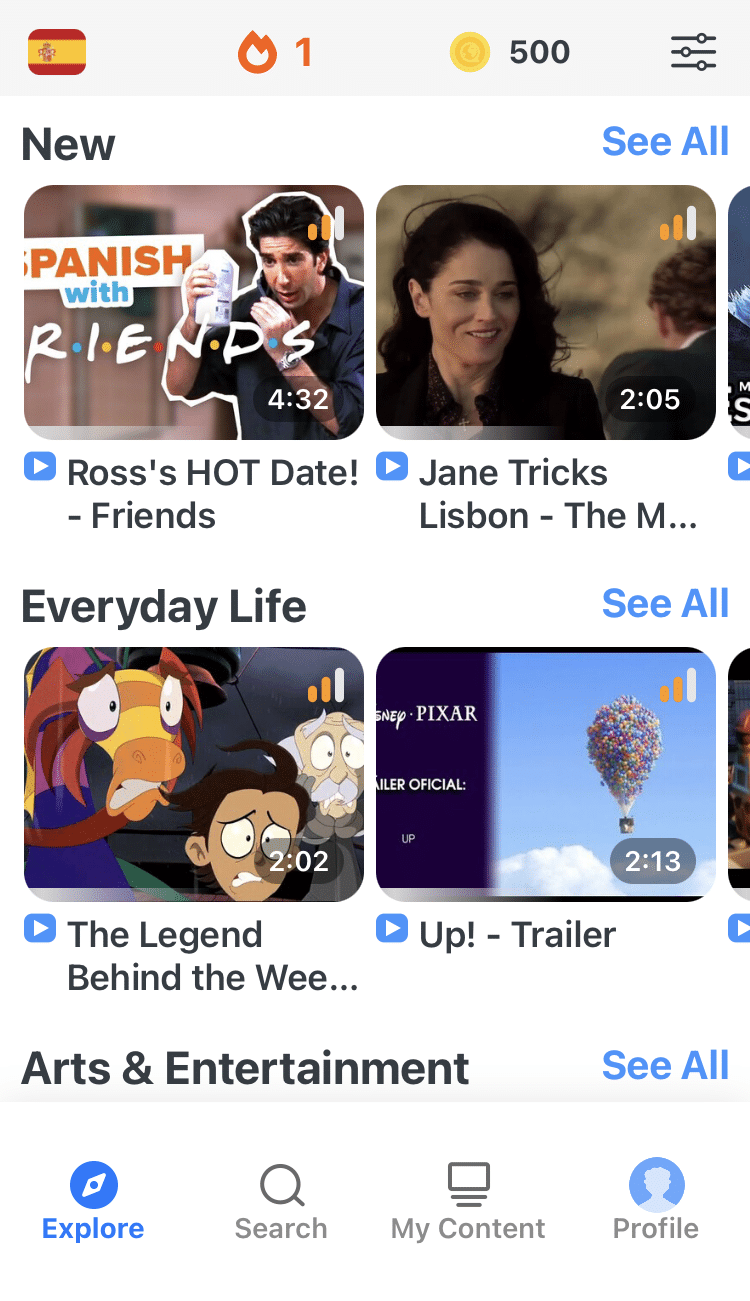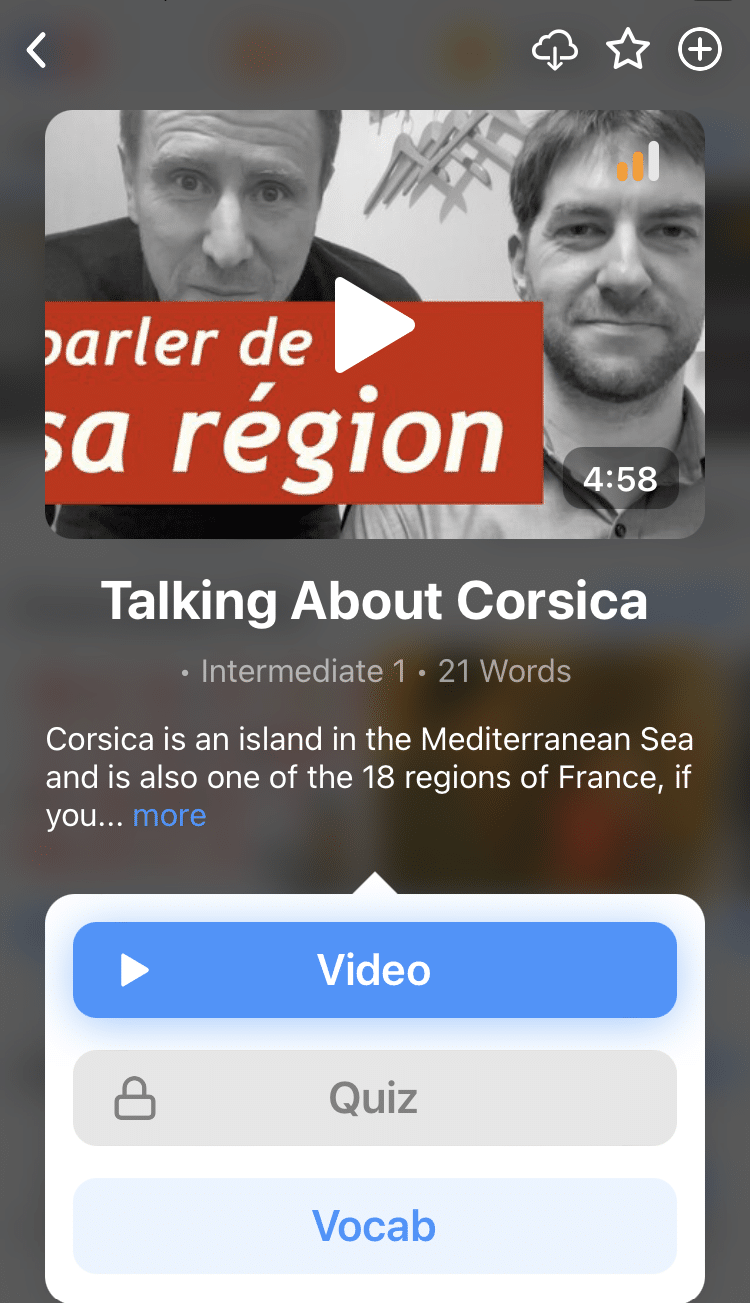
How to Become a Polyglot: 21 Solid Tips
Believe it or not, a polyglot isn’t necessarily “fluent” in multiple languages, but rather someone who can communicate with a high level of proficiency in several target languages.
I’m starting with a definition of a polyglot to emphasize that becoming a polyglot is completely achievable. With the help of my guide, find out how you can communicate in multiple languages without relying on a dictionary or translator.
Contents
Download: This blog post is available as a convenient and portable PDF that you can take anywhere. Click here to get a copy. (Download)
1. Figure out your “why” for each of your target languages
If your goal is only along the lines of “I’m going to become 100% fluent in A, B, C, D and E languages,” you’re going to set yourself up for burnout and disappointment. Studying one other language—let alone multiple—takes an incredible amount of time and energy, and as a busy adult, you likely don’t have much of either.
So, it’s important that you take a closer look at each of your target languages and ask yourself, “Why do I want to learn this language?”
For example:
- Are you learning it for practical reasons, like being able to travel and navigate a country that uses the target language? Or do you want to be able to communicate with your significant other’s family?
- Are you learning it to give you a leg up at work and/or the job market?
- Are you simply learning the language for pleasure (i.e., you’re learning the language for its own sake)?
Knowing why you want to learn a specific language (or languages) will help you lay the groundwork upon which you can build a solid language learning plan. By knowing why you want to learn a language or languages, you can figure out things like:
- How much time to spend learning a language
- What specific aspects you need to focus on (e.g., vocabulary, basic phrases)
- Which study method will work best for you
Here’s a more in-depth guide on setting language learning goals:
https://www.fluentu.com/blog/success-in-language-learning/
2. Use your “busy time” for studying
When you subtract the time you spend sleeping, eating, cooking, commuting, bathing and working, you aren’t left with much time to actually focus and study. Therefore, it’s important to incorporate language learning reminders into your busy time.
For example, even though getting in an extra 10 minutes of language study time at three various “busy times” a day may not seem worthwhile, it actually adds up to 3.5 hours a week!
If you aren’t sure of your busy time, spend a day recording exactly how long you do each of your regular tasks. This can be incredibly revealing of the amount of time you spend doing specific things each day.
We typically spend more time doing mundane and routine tasks than we realize. Then, think about whether and how you can include language studying into (or in-between) those chunks of time.
3. Listen to target language content
For example, you could listen to language dialogues or songs during your workout routine, while you cook, during your commute to work or while waiting for a meeting to begin at work.
And it doesn’t have to be just podcasts and audiobooks, though these are definitely ideal for multitasking while learning languages. You could also download a language learning app like FluentU, which transforms authentic videos that native speakers watch into valuable language learning lessons.
On FluentU, you could click subtitles to reveal vital information like the word’s definition, part of speech and more. You could also add new words into a customizable flashcard deck, as well as take quizzes to review how much you’ve learned.
If you can’t watch the videos because you’re doing something else, you could always play them in the background.
4. Use parallel texts
Essentially, parallel texts are books that feature one language on the odd pages and another on the even pages. They allow you to translate both languages line-by-line and easily decipher how sentences and grammar are structured.
You could also read a page in your target language and simply refer to the English side when you want to double-check your comprehension from time to time.
As you can imagine, this’ll allow you to go through two or more languages much faster than if you’re simply reading multiple books that each use just one language.
5. Read the same book in multiple languages
That said, if you prefer to read a foreign language book that’s only in one language, I suggest choosing something that you already know like a favorite children’s book. Alternatively, you could go for popular classics like “Harry Potter,” “The Hunger Games,” “Twilight,” “Fifty Shades of Grey,” etc.
The above suggestions often use simple sentence structures and have a reading level of 8th grade or lower. Also, the fact that they’re already familiar to you saves you the extra time and effort of having to decipher the books’ plotline and overall themes on top of trying to pick up valuable language lessons. You can just focus on comparing the translations instead of wondering about whether the plot twist makes sense, for example.
6. Watch videos using multiple subtitles and/or audio
If you have a Netflix subscription (and honestly, who doesn’t at this point?), you could also take advantage of the platform’s multi-audio/multi-subtitles feature.
You can set the audio in your native language and the subtitles in your target language (or vice versa), set both the audio and subtitles in your target language (or two) or turn off one or the other. The possibilities are endless!
7. Use multilanguage learning apps
Luckily, there are plenty of language learning apps that fit this bill, such as Duolingo, Memrise, Busuu and Mondly. Some of them take a “gamified” approach to doling out language lessons, while others have a more traditional course format.
Once you get the hang of how to use a specific app, you can expect more or less the same lesson progression no matter what language(s) you choose to study on it. That means you can focus on the finer points like conjugating irregular verbs instead of worrying about what the next step in your language learning journey will be—because the app already has it all laid out for you!
8. Learn similar languages simultaneously
For example, if your native language is English (which is part of the Indo-European language family), then the easiest languages for you to learn would be German, Dutch and Frisian, since all of those are also Indo-European languages. On the other hand, if you’re studying Spanish, you’ll have a leg up when studying other Romance languages like French, Italian and Portuguese.
You may also have an advantage when learning Japanese as a Mandarin Chinese speaker (and vice versa). Although they belong to different language families, they use similar writing systems with similar meanings for the characters. Japanese even has what’s known as onyomi readings, which are essentially pronunciations derived from (but not necessarily the same as) Chinese.
Be alert and curious for any similarities and patterns across the languages you’re learning, and you might just fast-track your way to becoming proficient in multiple languages.
9. Practice with a language exchange partner
When it comes to learning languages, you’ll often hear the phrase “use it or lose it” and for good reason. Let me tell you from personal experience that, no matter how long or hard you study a language, your skills in it will get rusty if you don’t use it at all.
One way to ensure that you’re practicing your language skills regularly is by having a language exchange partner. Assuming you “vibe” with that person, you’re not likely to run out of things to talk about—and that’s not even covering straight up language lessons!
10. Get a good language tutor
If you’re not really keen on the whole language exchange setup (because, for example, you’re more comfortable learning than teaching a language), you could also get an online language tutor instead.
You could request that they focus on lessons where you get to use conversational phrases in your target language as opposed to technical grammar topics (though those are important, too!).
11. Stay on track with a language learning buddy
If you can’t find a language exchange partner or tutor, you could also find someone learning the same language(s) as you.
Ideally, that someone should be a little farther along their journey than you, so they can offer you advice on the do’s and don’ts of learning your particular target language. But if you can only find someone who’s at the same level or a slightly lower level than you, that’s fine, too. You’ll probably still understand each other’s struggles and keep each other accountable as far as your language learning goals are concerned.
You could also offer each other tips, meet up and have study sessions together, etc. If nothing else, you’ll have gained a friend with whom you have tons in common!
12. Get motivated by an online community
Does the idea of meeting up with a partner or tutor give you the heebie-jeebies? You could always head over to online language learning communities like Reddit. In particular, r/languagelearning has a ton of fruitful discussions on how to become a polyglot.
The great thing about these communities is that you can stay anonymous and protect your privacy while using them. You also hear from real people studying languages, so you can be sure their advice is more-or-less valid, and you could even come across tips that you won’t find anywhere else.
13. Follow social media accounts in your target languages
One of the best ways to learn languages is to immerse yourself in authentic content. And, as far as written authentic content is concerned, social media is a gold mine.
Every social media post in your target language can be transformed into a bite-sized lesson, whether it’s a purely text post, an image macro or a short video reel. Because social media posts typically have constraints on space and character counts, you’re less likely to get overwhelmed than if you, say, dive into a full-blown novel or movie. You can break down each post one line at a time and still be able to complete your mini-translation exercise within a few minutes or so.
14. Do translation exercises every day
As an aspiring polyglot, you’re going to get used to thinking of everything in at least two languages. If you’re a Japanese/Chinese learner, for example, you no longer see “water” as just that—you also start thinking of it as mizu/shuǐ, respectively. And that’s a good thing—it means your polyglot brain is starting to take shape.
If you feel you still have a ways to go in that respect, it’s okay. Just head over to these translation exercise sites and apps, or come up with your own translation exercises that you can vary on a daily basis. For example, you might try to name as many household objects as you can in Spanish on Monday, then do the same exercise on Tuesday but in Italian, and so forth.
That’s the beauty of being a polyglot—you start to see the world in ways that people who only know one (or even two) languages don’t. And isn’t that why you want to become a polyglot in the first place?
15. Take mock language exams from official bodies
Of course, most language learning apps have these quick quizzes that you can use to review after every lesson. But if you want to check how far along you are in your journey to becoming a polyglot, you may want to take some sample language proficiency tests, as well.
After all, those tests are designed to measure how well your language skills (reading, listening, writing, speaking) stack up against an officially established scale of fluency. Besides, you’ll probably be taking them in the future anyway, since you’ll need solid proof (i.e., a certificate) that you’re as fluent in your target language as you say you are.
Considering how long language proficiency exams have been around, it’s very likely you’ll find sample exams from years past online. Ask your language exchange partner/tutor/forum for tips on how to find these—they’ll surely point you in the right direction. While years-old exams may be dated, they can still give you a decent idea of what to expect come exam day, and how your language fluency will be assessed overall.
16. Track your progress with a language learning journal
When you’re learning two or more languages, I strongly recommend having a language learning journal. You can keep just one for multiple languages or several for every language you’re learning—whichever works for you.
The important thing is that these journals can provide an accurate picture of where you are fluency-wise at any point in time. For example, you could write about how you’ve studied 20 new words on a Saturday, and jot down how many of those words you were able to recall based on the results of a quick practice exam you took.
It’s important that you be as specific as you can about what you’ve achieved within any given day/week/month/quarter/year. This way, if you feel discouraged at any point, you could always look at your journal and see how far you’ve come.
17. Adjust your study routine whenever necessary
Sometimes, you’ll find that a specific language learning tip is no longer working for you. Maybe you’ve outgrown flashcards, and would like to start reading classical novels in your target language next. Maybe your schedule is so tight that you no longer have time to marathon TV dramas and can only squeeze in room for podcasts/audiobooks now.
And that’s perfectly fine. Language learning should fit around your life, not the other way around. After all, isn’t that why you’re learning a new language in the first place—to experience everything life has to offer?
18. Host Couchsurfers from around the world
If you don’t have the means to immerse yourself in a new culture or travel to the country that uses your target language, bring the language to you instead. Hosting Couchsurfing guests from around the world is a free and effective way to practice your multiple language skills.
If you aren’t familiar with the service, it’s an online community with millions of users. You first create a profile as either a traveler or a host, filling out details about yourself and your interests. In this case, you’d start as a host.
You might think, “Why would I ever let a stranger stay at my home?” Well, that’s a totally valid concern, but not one that should keep you from giving it a shot. Couchsurfing takes safety seriously, and all hosts are required to leave feedback for past guests. That way, you ensure that you’re hosting someone responsible with a history of positive reviews.
Rather than hosting guests and having them speak your language, try communicating to them in theirs. Make sure to host guests from a variety of countries so that you’re exposing yourself to different languages. If you’re still at the start of your polyglot journey, it may be better to host guests of one language until you feel comfortable exposing yourself to an additional new language.
Think about it: If you’re thinking of picking up Italian and don’t have the money to invest in books or tutoring, you can easily host Italian tourists visiting your hometown. It’s a win for you, a win for the Couchsurfer and a win for the global community you’re enriching. Perfetto!
19. Use the “laddering technique”
When learning multiple languages, it can be tempting to think of the phrase you want to express in your native tongue and then mentally translate it to your desired language.
For example, if you’re an English speaker learning both Mandarin and Japanese, you first think of what you want to say in English before you mentally translate it to either Mandarin or Japanese. In this case, English is used as the base language for all other languages. Unfortunately, this ends up confusing the speaker, making it common to mix up and confuse languages.
This is where the Laddering Technique comes in! Laddering is a process of creating a mental hierarchy for your language translations. Imagine a ladder where the first rung is your native language, the second rung is your second language and so on. When translating something, only use the language of the rung before the one you’re trying to communicate with.
For example, let’s say your native language is English (first rung), followed by Spanish (second rung), followed by Japanese (third rung). When learning Japanese, rather than mentally translating words from English to Japanese, translate starting from Spanish. Not only does this enhance both your Spanish and Japanese skills, but it also makes the language learning a little bit easier on your brain.
20. Work with a life coach
Learning multiple languages can easily become overwhelming and scary for someone going at it alone. Life coaching is an effective way to develop strategies to manage your time and amp up your productivity.
Sometimes, it’s hard for us to see what exactly is keeping us from maximizing our true potential. A life coach is trained to help you see what you’re not seeing and ask you some thought-provoking questions to reflect on. Specifically, a life coach can help you process where you’re getting stuck and brainstorm ways to overcome any internal or external barriers to your learning.
21. Reward yourself whenever you hit a milestone
Let’s be honest: Language learning can be difficult at the best of times. So, it’s important that you keep up your motivation whenever you can and whenever you feel it flagging. For example, if you manage to read an entire menu in Spanish without missing a beat, treat yourself to your favorite Latin American delicacy. That’s quite a fitting reward if you ask me!
Need further inspiration to become a polyglot? Check out this video by Steve Kaufmann:
The truth is, there’s no single go-to formula for how to become a polyglot. It’s possible that only a few of the tips above will work for you, and that’s completely valid. If all of them work for you, then that’s awesome.
In any case, congrats on beginning this exciting journey to becoming a multilingual master!
Download: This blog post is available as a convenient and portable PDF that you can take anywhere. Click here to get a copy. (Download)
And One More Thing...
If you dig the idea of learning on your own time from the comfort of your smart device with real-life authentic language content, you'll love using FluentU.
With FluentU, you'll learn real languages—as they're spoken by native speakers. FluentU has a wide variety of videos as you can see here:
FluentU has interactive captions that let you tap on any word to see an image, definition, audio and useful examples. Now native language content is within reach with interactive transcripts.
Didn't catch something? Go back and listen again. Missed a word? Hover your mouse over the subtitles to instantly view definitions.
You can learn all the vocabulary in any video with FluentU's "learn mode." Swipe left or right to see more examples for the word you’re learning.
And FluentU always keeps track of vocabulary that you’re learning. It gives you extra practice with difficult words—and reminds you when it’s time to review what you’ve learned. You get a truly personalized experience.
Start using the FluentU website on your computer or tablet or, better yet, download the FluentU app from the iTunes or Google Play store. Click here to take advantage of our current sale! (Expires at the end of this month.)





